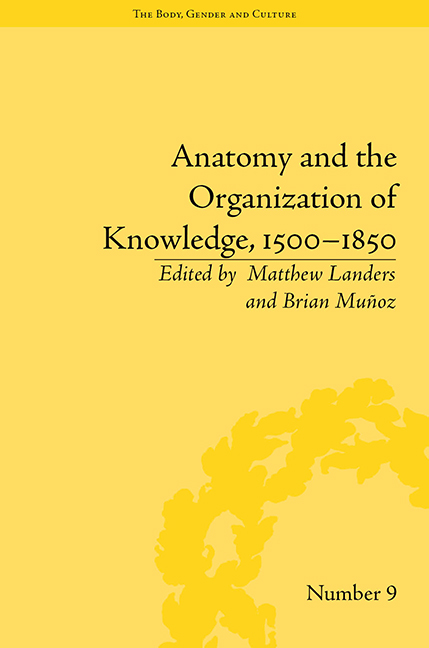Book contents
- Frontmatter
- CONTENTS
- List of Contributors
- List of Figures
- Introduction
- Part I The Body as a Map
- Part II The Collective Body
- 6 Mirroring, Anatomy, Transparency: The Collective Body and the Co-opted Individual in Spenser, Hobbes and Bunyan
- 7 From Human to Political Body and Soul: Materialism and Mortalism in the Political Theory of Thomas Hobbes
- 8 Visualizing the Fibre-Woven Body: Nehemiah Grew's Plant Anatomy and the Emergence of the Fibre Body
- 9 Forms of Materialist Embodiment
- Part III Bodies Visualized
- Notes
- Index
8 - Visualizing the Fibre-Woven Body: Nehemiah Grew's Plant Anatomy and the Emergence of the Fibre Body
from Part II - The Collective Body
- Frontmatter
- CONTENTS
- List of Contributors
- List of Figures
- Introduction
- Part I The Body as a Map
- Part II The Collective Body
- 6 Mirroring, Anatomy, Transparency: The Collective Body and the Co-opted Individual in Spenser, Hobbes and Bunyan
- 7 From Human to Political Body and Soul: Materialism and Mortalism in the Political Theory of Thomas Hobbes
- 8 Visualizing the Fibre-Woven Body: Nehemiah Grew's Plant Anatomy and the Emergence of the Fibre Body
- 9 Forms of Materialist Embodiment
- Part III Bodies Visualized
- Notes
- Index
Summary
Although almost forgotten now, fibre attracted enormous interest among medico-scientists throughout the long eighteenth century. It is no exaggeration to say that if the nineteenth century was the age of the cell, then the eighteenth century was the age of fibre. Setting fibre as the ultimate building unit of the animal body, many eighteenth-century medico-scientists developed various theories based on the concept of fibre and the fibre body. That the two pillars of eighteenth-century medical sciences, Herman Boerhaave (1688–1738) and Albrecht von Haller (1708–77), were the eminent proponents of fibre theory speaks to its importance during that period. Although this theory was fully established with the systematization by Boerhaave's medical doctrine in the early eighteenth century, there were significant contributions to the formation of the theory and the idea of the fibre body by anatomists, physiologists, natural philosophers and microscopists of the later seventeenth century. Among others, Nehemiah Grew (1641–1721), a plant anatomist, made a crucial step towards the emergence of the idea of the fibre body by most explicitly articulating the two constituent features of fibre theory – the idea of the fibre as the minimum constituent of the body and the idea that the whole body is variously interwoven of nothing but these fibres.
Focusing on his anatomical works, this essay illuminates the significance of the new understanding of the body as fibre-woven textiles fully visualized in Grew's plant anatomy, which helped to crystallize into a coherent whole the fragmented ideas of the discrete anatomists and microscopists who studied the organs of the body.
- Type
- Chapter
- Information
- Anatomy and the Organization of Knowledge, 1500–1850 , pp. 113 - 128Publisher: Pickering & ChattoFirst published in: 2014



